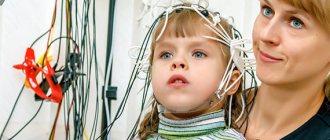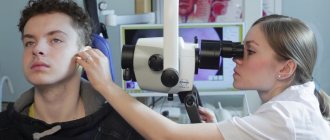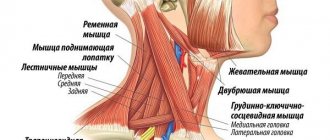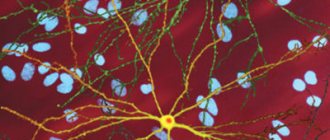Do you feel cramps in your legs? Do you wake up at night with sharp muscle pain? Let's look together at the main causes of seizures and answer frequently asked questions.
What are leg cramps?
A cramp is a sudden contraction of a muscle that does not relax for a variable period of time. Spasm, like pain, can be felt for both a long and short period of time. Muscle spasms arise from a large mass of accumulated decay products released when a vessel is compressed.
Why do my legs cramp at night?
The appearance of leg muscle spasms occurs in healthy people, as well as in people susceptible to chronic pathologies. In a healthy person, the lower limbs are pulled in the following cases:
- A particular muscle group is in a tense state for a long time.
- The limbs occupy a certain position for a long time.
- When the body freezes.
- If there is a heavy load on the untrained body.
- With a lack of vitamins and microelements in the body.
For a healthy person, seizures are a rare occurrence. They are characterized by rapid disappearance after sleep. Subsequently they are rarely observed. In cases where convulsions are characterized by regularity and last up to 5 minutes, the causes should be sought in the malfunction of internal organs and systems.
There are 3 dangerous reasons why legs cramp:
- Violation of water and electrolyte balance.
- Poor circulation of soft tissues.
- Pathologies of the nervous system.
What is the difference between nocturnal epileptic seizures and parasomnias?
- parasomnias often occur in early childhood (from 1-3 years to 12 years), and nocturnal epileptic seizures develop later and can begin at any age;
- parasomnias are longer lasting (on average duration is 5-30 minutes) compared to nocturnal epileptic attacks (on average duration is 20 seconds - 5 minutes);
- parasomnias are more variable, epileptic seizures during sleep are more stereotypical (similar to each other);
- parasomnias gradually cease on their own or with sedative therapy by the age of 12; epileptic seizures during sleep respond only to antiepileptic therapy;
- After parasomnias, daytime drowsiness is rarely observed, and after a night attack of epilepsy, lethargy, drowsiness, and “weakness.”
Features of leg cramps at night
Severe spasms in soft tissues during sleep indicate an excess amount of lactic acid in them. This can happen if the sleeping area is very hot and there is not enough oxygen. Very often, the cause of this phenomenon is vascular pathologies, especially when there has been muscle overload.
In this case, venous blood, due to overstrain, is not able to flow normally, and the flow of biological fluid in the arteries slows down. All this causes aching pain, heaviness in the lower extremities, which often ache. Characteristic is the absence of cramps in the morning.
In order to understand the cause of nagging pain in the lower extremities, it is important to consider which muscle group is particularly troubling.
Cramps in calves
Causes of spasms in the calves:
- Dehydration of the body.
- Kidney failure.
- Raynaud's disease.
- Osteochondrosis.
- Cirrhosis of the liver.
- Varicose veins
- Pathologies of cerebral circulation.
- Fractures of leg bones.
- Intoxication of the body.
- Abuse of diuretics.
- Endocrine diseases.
During the day, the shins are subject to the greatest load, so most often they hurt and experience involuntary contractions.
And also hemodialysis and plasma transfusion are causes of leg spasms. Short-term muscle spasms occur in pregnant women in the 2nd and 3rd trimesters. The growth of the bone structures of the intrauterine baby causes the need for an increase in potassium and calcium. In the body of pregnant women, the content of these microelements is critically reduced, which leads to spasms of the limbs.
Cramps in toes
Spasms of the foot muscles are the result of impaired blood circulation in the capillaries, pathological phenomena in the joints or ligaments. This pathology is caused by the following factors:
- Increased blood sugar.
- Constant stress on fingers.
- Pathology of tissue utilization of carbohydrates.
- Obliterating endarteritis.
- Flat feet.
- Smoking.
Leg cramps in children
It often happens that children 2–5 years old during a night's sleep are forced to wake up by pain in the calf muscles. In adolescents, leg cramps at night occur during a period when the child’s body is actively growing. If a teenager has spent a day full of physical and emotional stress, the likelihood of involuntary muscle contractions is quite high.
The characteristic tension of the lower extremities makes it possible to determine that the child is experiencing seizures
Nocturnal epilepsy causes
The likelihood of epilepsy attacks occurring during sleep is determined by sleep physiology. Let's find out what happens in the cerebral cortex during epilepsy during sleep.
During sleep, the excitability of nerve cells changes, their work becomes asynchronous.
Sleep may be disturbed with epilepsy, more often with focal forms.
During epileptic seizures, the EEG shows an increase or increase in the epiactivity index during the slow-wave sleep phase. During the rapid eye movement sleep phase, there is a violation of the synchronicity of bioelectrical activity. Due to the asynchrony of discharges during the rapid eye movement sleep phase, the spread of discharges to other parts of the brain is suppressed.
When sleep phases are disturbed, with a shortening of the rapid eye movement sleep phase, excitability is noted, and on the EEG there is an increase in the spread of discharges, which is sometimes called a decrease in the threshold of convulsive readiness.
Sleep deprivation causes increased sleepiness, which promotes falling asleep during EEG recording. When recording an electroencephalogram during sleep, pathological activity is more likely to be detected.
In addition to sleep deprivation, epiactivity can be provoked by forced awakening, rich food, and certain medications (mild sedatives).
Diagnostics
Finding out on your own why your legs are cramping does not lead to a positive result. To establish a diagnosis, you should see a doctor. During your appointment, your specialist will find out the following:
- When my legs started to cramp at night.
- What preceded these symptoms?
- Presence of concomitant pathologies.
- Does the patient engage in sports, including physical training?
- Spasms are acute or mild.
- How often he cramps and twists his legs at night.
First aid
There are several methods to stop spastic contractions of the limbs:
- Actively massage the cramped leg.
- Gently stretch the muscles of the lower leg or foot.
- Strongly relax tissue.
In some cases, the attack makes itself known in advance. Cramps begin with tension, numbness, pulling pain in the limb, or the legs begin to twist. What to do if you notice these symptoms:
- Rotate your leg, changing its position.
- Achieve relaxation of the muscles of the limb.
- Normalize blood circulation in the feet and legs.
The fastest way to eliminate spasms is muscle stretching. To eliminate night cramps in the lower limb, you need to pull your toes towards you with your hands. In this case, you should try to fully straighten the knee to relax the soft tissues.
If cramps occur frequently at night, you should do the following:
- Sit down or take an upright position with your feet flat on the floor. If possible, take a few steps on a cool surface.
- Gently rub the tense muscle, stroking it, patting it, shaking it.
- Place your leg in an elevated position, for which you should place a pillow under your heels.
Emergency help for tonic leg spasms may include pinching the pulled muscle or a pin prick. These methods instantly relieve cramps both day and night. You can relax the muscle by pinching your leg or biting it. In this case, a reflex switching of activated nerve endings occurs with another stimulus.
What can nocturnal epilepsy be confused with?
Sleep disorders similar to sleep epilepsy:
- Parasomnias (somnambulism, night terrors, waking up with confusion).
- Rhythmic motor acts during sleep (benign sleep myoclonus, involuntary movements of the limbs, bruxism = teeth grinding).
- Enuresis (bedwetting).
- Disturbance of the breathing rhythm during sleep (sleep apnea, including physiological apnea in children, obstructive apnea in adults).
- Movements during rapid eye movement sleep.
- Automatisms in sleep (swinging, yactation).
- Nocturnal “paralysis” (or nocturnal “intoxication”).
Treatment
Leg cramps at night are treated comprehensively, although the symptoms of the disease can be relieved using one of the methods described above. The patient needs to consult a therapist and undergo a blood test, which will make it possible to assess the patient’s condition and identify the cause of the spasms. After which the treatment will be accompanied by a specialized specialist:
- neurologist,
- phlebologist,
- cardiologist
- endocrinologist
Serious treatment of pathology must be preceded by a diagnosis that will identify the cause of the disease, which will make it possible to prescribe appropriate treatment
Medicines for leg cramps
There are no specific medications for the treatment of muscle cramps. Medicines are selected by a specialist after receiving research results. Common medications for muscle spasms for various reasons are mineral-vitamin complexes. And also, the patient is often prescribed medications containing muscle relaxants to relax the muscles.
Effective mineral and vitamin complexes:
Is it possible to run in the evening before bed?
- Calcium-D3 Nycomed.
- Complivit.
- Alphabet.
Magnesium preparations:
- Diasporal.
- Asparkam.
- Baclofen.
Muscle relaxants:
- Sirdalud
- Baclofen.
- Tolperisone.
There are no topical treatments for leg cramps, so ointments cannot relieve symptoms. Medicines with a warming and irritating effect can somewhat reduce the manifestation of attacks. If cramps occur due to varicose veins, the phlebologist will use local remedies that will restore blood circulation, prevent the formation of blood clots, and the legs will stop hurting.
Additional Methods
To combat nocturnal cramps at night, the following measures are used:
- Contrast baths, dousing extremities with hot and cold water before bed. To normalize blood flow, it is useful to use decoctions of medicinal plants: valerian, mint, horsetail.
- Diet correction. The menu should include an increased amount of foods rich in vitamins and microelements. It is useful to include in the diet: cod liver, fermented milk products, avocado.
- Gymnastics. You need to do exercises every day: walking on your toes, walking on your heels, wiggling your toes, bending your knees.
If leg cramps are observed only at night, the cardiologist or vascular surgeon will refer the patient for Doppler ultrasound to subsequently eliminate changes in blood circulation in the arteries
Generalized epilepsy and sleep
Seizures during sleep are characteristic of idiopathic generalized epilepsy. This connection is explained by damage to thalamocortical structures.
In idiopathic generalized epilepsy, sleep deprivation stimulates epiactivity and increases the likelihood of an epileptic seizure.
Attacks more often occur when falling asleep or waking up, especially with early forced awakening.
Thus, in the first 15 minutes - 1 hour after getting up, patients with juvenile myoclonic epilepsy experience epileptic seizures: myoclonus (usually in the form of twitching in the hands) or, especially with ineffective therapy, generalized tonic-clonic seizures.
In epileptic encephalopathies with electrical status of slow-wave sleep (ESES), even from the name it is clear that the manifestations of the disease are associated with sleep. A feature of these forms of epilepsy is the presence of continued epileptiform activity with a high epiactivity index (more than 80%) during the slow-wave sleep phase. And during the rapid eye movement sleep phase, the epiactivity index decreases.
Nocturnal seizures in epileptic encephalopathies with electrical status of slow-wave sleep can be in the form of: focal motor seizures during sleep, generalized tonic-clonic seizures. Daytime attacks, both focal and generalized, are also possible.
Symptomatic secondary generalized epilepsy is less dependent on sleep-wake cycles. With this form of epilepsy, epileptiform activity and seizures can occur at any time of the day with equal probability.
Prevention
To avoid painful symptoms, you should:
- Strictly control water balance. During hot weather outside, significantly increase the volume of fluid consumed.
- Choose the right shoes with sufficient ankle support.
- Every day, massage your limbs yourself, starting from your fingers and ending with your knee. Massage is also done when the legs do not cramp.
- Avoid overloading your limbs.
- Regularly take vitamins and medications containing potassium, calcium, and magnesium.










